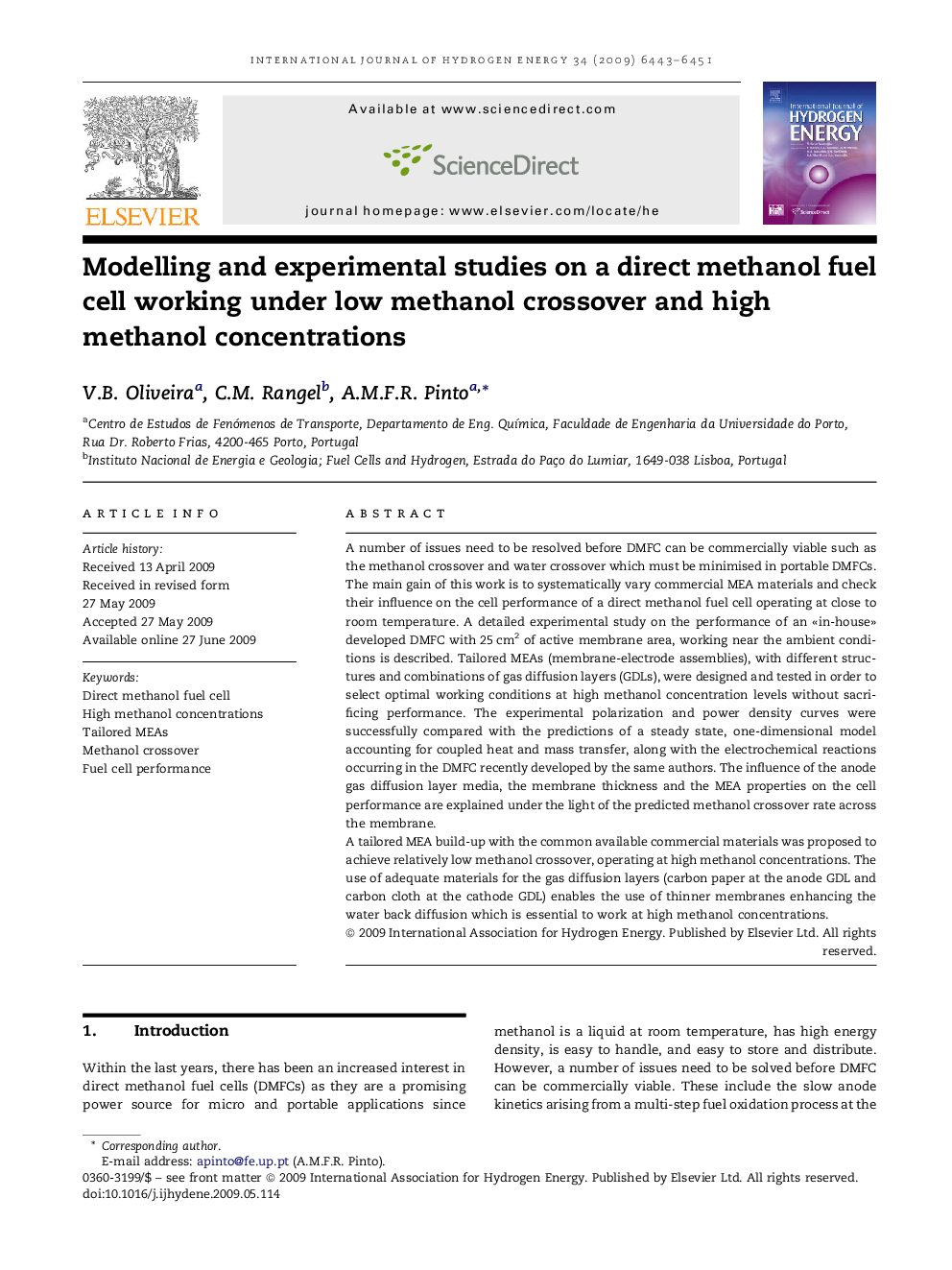| Article ID | Journal | Published Year | Pages | File Type |
|---|---|---|---|---|
| 1283157 | International Journal of Hydrogen Energy | 2009 | 9 Pages |
A number of issues need to be resolved before DMFC can be commercially viable such as the methanol crossover and water crossover which must be minimised in portable DMFCs.The main gain of this work is to systematically vary commercial MEA materials and check their influence on the cell performance of a direct methanol fuel cell operating at close to room temperature. A detailed experimental study on the performance of an «in-house» developed DMFC with 25 cm2 of active membrane area, working near the ambient conditions is described. Tailored MEAs (membrane-electrode assemblies), with different structures and combinations of gas diffusion layers (GDLs), were designed and tested in order to select optimal working conditions at high methanol concentration levels without sacrificing performance. The experimental polarization and power density curves were successfully compared with the predictions of a steady state, one-dimensional model accounting for coupled heat and mass transfer, along with the electrochemical reactions occurring in the DMFC recently developed by the same authors. The influence of the anode gas diffusion layer media, the membrane thickness and the MEA properties on the cell performance are explained under the light of the predicted methanol crossover rate across the membrane.A tailored MEA build-up with the common available commercial materials was proposed to achieve relatively low methanol crossover, operating at high methanol concentrations. The use of adequate materials for the gas diffusion layers (carbon paper at the anode GDL and carbon cloth at the cathode GDL) enables the use of thinner membranes enhancing the water back diffusion which is essential to work at high methanol concentrations.
